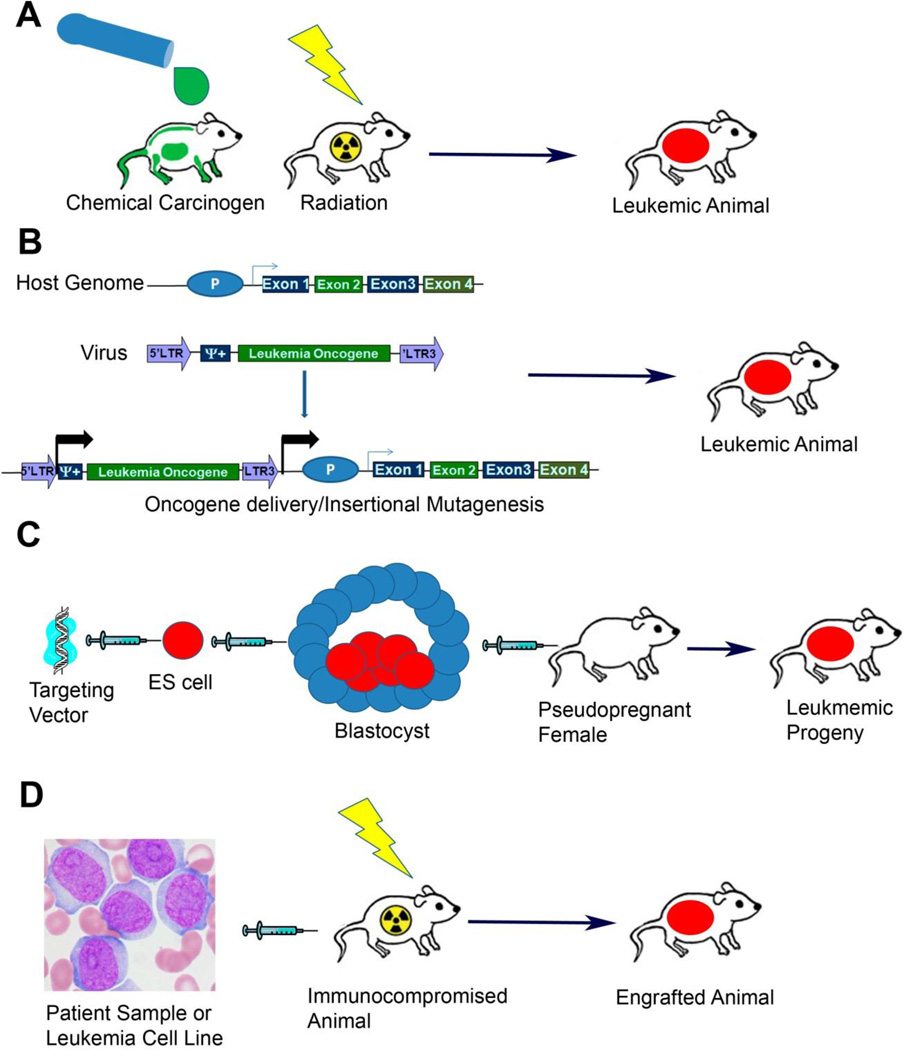Figure 1.
Major techniques for generating animal models of leukemia. A) Carcinogen Induced Models. Animals from susceptible strains are exposed to carcinogenic chemicals or ionizing radiation. After exposure animals are followed for the development of leukemia. B) Mosaic, Transposon and Viral Induced Models. In mosaic models HSCs are harvested from donor mice and infected with viruses that encode an oncogene of interest. Viral integration into the host genome results in the delivery and expression of the oncogene. In addition to oncogene delivery the insertion of the virus can result in the aberrant expression of cellular proto-oncogenes genes (as depicted) or in disruption of a cellular tumor suppressor if integration occurs intragenically. Transposon mutagenesis results from similar consequences of transposon integration into the host genome. C) Transgenic Models. Targeting vector that has been engineered to express the transgene of interest is injected or electroporated into murine ES cells. ES cells that have integrated the vector are then injected into tetraploid blastocysts that are in turn then injected into pseudopregnant surrogate mothers. Alternatively vectors can be directly injected into fertilized zygotes and those zygotes then implanted in surrogate mothers. Offspring are then monitored for the development of leukemia. D) Xenograft Models. Primary patient samples or human cell lines can be directly injected into immunocompromised host animals. Host animals are frequently exposed to ionizing radiation prior to sample injection to suppress any residual immune function.

